Woven Vs Non Woven Landscape Fabric

Table of Contents
Woven vs. Non-Woven Landscape Fabric: Which is Right for Your Garden?
Choosing the right landscape fabric can make or break your gardening success. It's a crucial element in weed control, moisture retention, and overall garden health. But with so many options available, understanding the difference between woven and non-woven fabrics is key. This comprehensive guide will break down the pros and cons of each, helping you make an informed decision for your specific needs.
Understanding the Differences: Woven vs. Non-Woven
The core difference lies in their construction:
-
Woven landscape fabric: This fabric is created by interlacing individual threads or yarns, similar to how clothing is made. Think of it like a tightly-woven tapestry. This method results in a strong, durable material.
-
Non-woven landscape fabric: This fabric is made from fibers that are bonded together using thermal or chemical processes, rather than being woven. It often feels more like a felt or a thick sheet. This manufacturing process leads to a less structured, but often more affordable, material.
Woven Landscape Fabric: Strength and Durability
Pros:
- Exceptional Strength and Durability: Woven fabrics are significantly stronger and more resistant to tearing than non-woven options. They can withstand heavy use and prolonged exposure to the elements. This makes them ideal for high-traffic areas or challenging environments.
- Longer Lifespan: Their robust construction translates to a longer lifespan, often lasting several years with proper care. This represents a potentially better value in the long run, despite a higher initial cost.
- Better Weed Barrier: The tighter weave provides a more effective barrier against aggressive weeds, preventing them from pushing through.
- Excellent for Heavy-Duty Applications: Woven fabrics excel in situations requiring strength and longevity, such as paths, driveways, or areas with substantial foot traffic.
Cons:
- Higher Cost: Woven fabrics are generally more expensive than non-woven alternatives.
- Less Breathable: The tight weave can sometimes hinder airflow and water permeability, potentially affecting soil health.
- More Difficult to Install: The stiffness of the material can make installation slightly more challenging.
Non-Woven Landscape Fabric: Affordability and Permeability
Pros:
- Lower Cost: Non-woven fabrics are significantly more affordable than woven options, making them a budget-friendly choice.
- More Breathable: Their structure allows for better air circulation and water penetration, promoting healthier soil conditions.
- Easy Installation: They are generally more flexible and easier to work with during installation.
- Lightweight: Easier to handle and transport compared to woven fabrics.
Cons:
- Shorter Lifespan: They tend to degrade faster than woven fabrics, often needing replacement within a couple of years.
- Less Durable: More susceptible to tearing and damage, particularly in high-traffic areas.
- Less Effective Weed Barrier: The looser weave allows some smaller weeds to penetrate.
- Potential for UV Degradation: Prolonged sun exposure can cause the fabric to break down more quickly.
Choosing the Right Fabric for Your Needs
The best choice depends entirely on your specific needs and budget:
- For high-traffic areas, steep slopes, or areas with aggressive weeds: Woven fabric is the superior option due to its strength and durability. The longer lifespan makes up for the higher initial investment.
- For less demanding areas, vegetable gardens, or flowerbeds with manageable weed pressure: Non-woven fabric offers a cost-effective solution. Its breathability can benefit your plants.
- Consider the climate: In areas with intense sunlight, a fabric with UV protection might be necessary, regardless of whether it's woven or non-woven.
Remember to always properly prepare the soil before laying any landscape fabric. This includes removing existing weeds and leveling the ground. Proper installation is crucial for maximizing the fabric's effectiveness. Investing in quality fabric, regardless of whether it's woven or non-woven, will ultimately save you time, money, and frustration in the long run.
Frequently Asked Questions (FAQs)
Q: Can I reuse landscape fabric? A: While possible, depending on the condition, it's generally not recommended due to potential weed seed contamination and degradation.
Q: How long does landscape fabric last? A: This varies greatly depending on the type of fabric, quality, and environmental conditions. Woven fabrics generally last longer (3-5 years or more) than non-woven fabrics (1-3 years).
Q: Does landscape fabric prevent all weeds? A: No, persistent weeds can sometimes penetrate even the strongest fabrics.
By understanding the key differences between woven and non-woven landscape fabric, you can confidently select the perfect material to create a thriving and weed-free garden.

Thank you for visiting our website wich cover about Woven Vs Non Woven Landscape Fabric. We hope the information provided has been useful to you. Feel free to contact us if you have any questions or need further assistance. See you next time and dont miss to bookmark.
Featured Posts
-
Sa Vs Afg Champions Trophy Match Preview
Feb 21, 2025
-
Large Pergolas
Feb 21, 2025
-
Smallest Size For Powder Room
Feb 21, 2025
-
Pillow For Living Room
Feb 21, 2025
-
Dubois Illness Delays Fight Parker Bakole
Feb 21, 2025